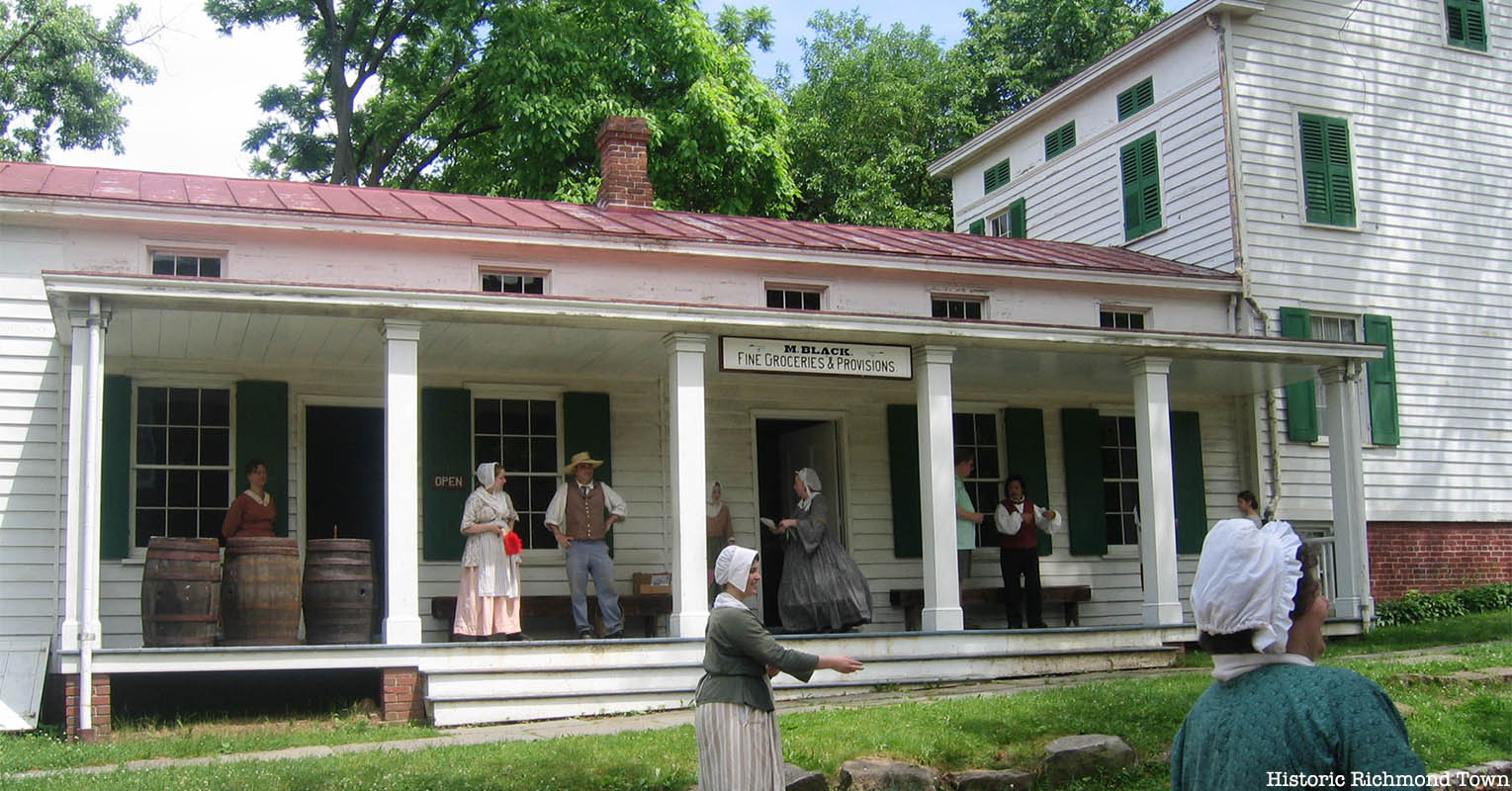Did you know there’s a 100-acre historical village on Staten Island, Historic Richmond Town? The town, with 40 historic buildings, allows visitors to experience life on Staten Island and neighboring communities from the colonial period to the present.
Founded as the Staten Island Historical Society in 1856, Historic Richmond Town paints a portrait of 350 years of Staten Island history. Before being set aside as a living history village, the land was the government center of Staten Island. However, this government center moved once Staten Island became a borough in 1898, making it necessary for the government to be closer to Manhattan.
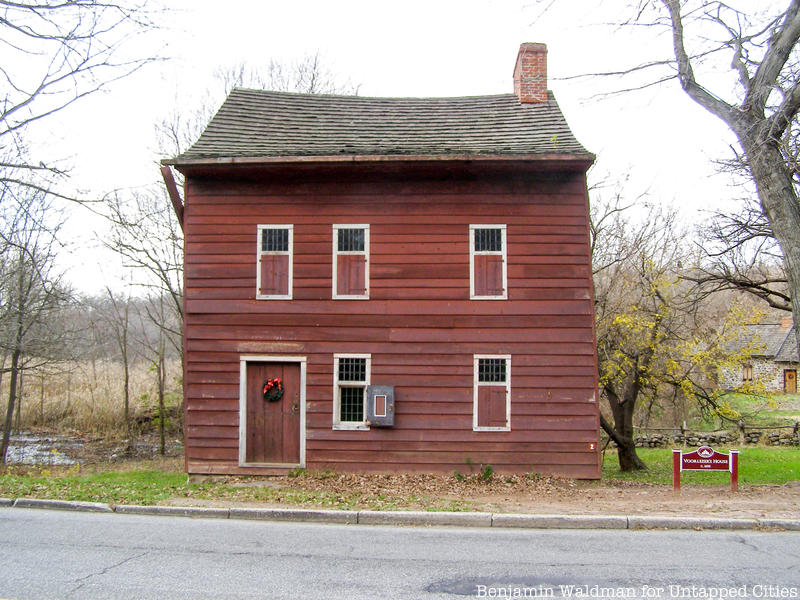
As the only living history village in New York City, Historic Richmond Town is unique in its ability to allow the public to experience and explore different aspects of the American experience. Since those involved with the town began their preservation mission, they have acquired new properties. Popular aspects of the town include the General Store, restored in 1964 and the Edwards-Barton House, constructed in 1869.
In the town’s structures, the lives of ordinary humans who built this country come to life. Visitors can learn about the cultures, customs, occupations, and social classes featured on site. 60,000 artifacts scattered throughout the property and those who reenact the history allow guests to optimize their educational experience.
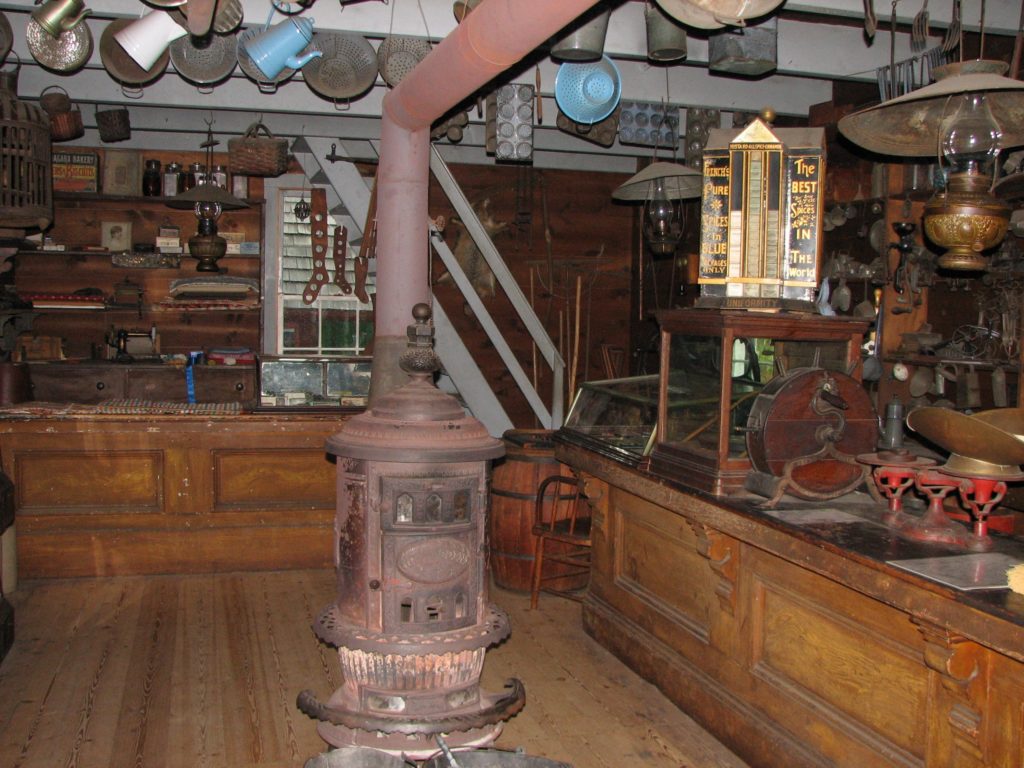
As visitors travel throughout the town, they can stop by the Historic Richmond Town’s Visitor Center and Museum Store, otherwise known as the Third County Courthouse. Built in 1837 in response to Staten Island’s growing population, the property housed a new the court and jail for RIchmond County. The city demolished the jail in 1959 and the space where it was once located is now the society’s parking lot. The building became a New York City Landmark in 1969, 50 years after the last court session occurred there.
Once fall approaches, visitors can visit Decker Farm, the oldest continuously working family style farm. Japhet Alston and Sara Decker Alston founded the farm around 1810. More than a century later, Alberta Decker, a descendant of the original Decker’s gave the farm to the Staten Island Historical Society in 1955. It was not until 1967 that the farm became a New York City landmark. Now, those who would like to visit the farm can do so to pick pumpkins in October.
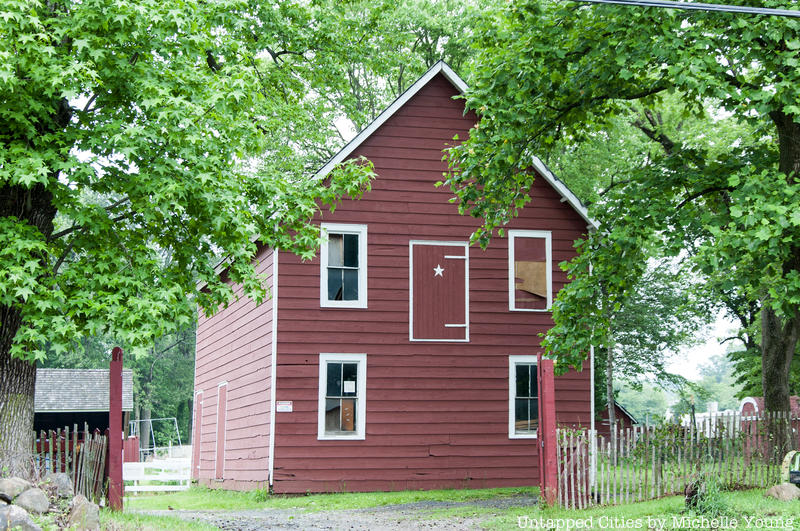
The Historic Museum on property is located in what used to be the County Clerk’s and Surrogate’s Office. Since constructed as a one-story structure in 1848, the museum has expanded in size with wings and stories added in response to its growing number of occupants. The Staten Island Historical Society opened a museum on the property in 1935. It was made a New York City landmark in 1969. The museum now holds various artifact, photograph, and document collections.
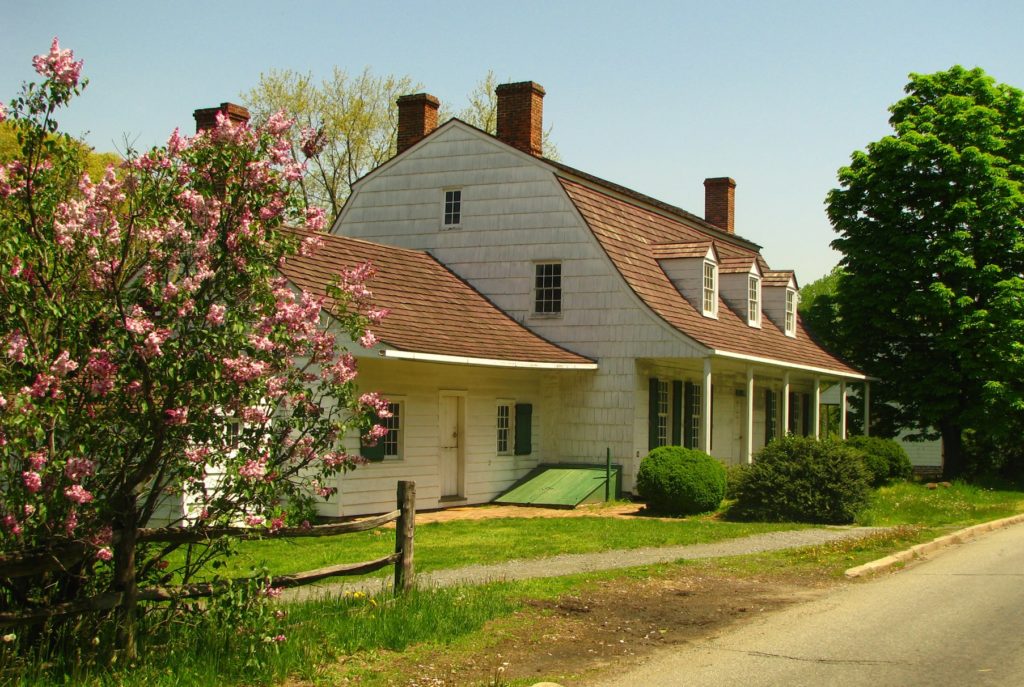
Another notable spot includes the Guyon Store that James Guyon Jr. constructed around 1819. Historic Richmond Town is the only living history village that cooks over an open hearth inside a historic building. Guests can visit the site as it depicted now as a tavern. The backyard of the tavern, transformed into a beer garden during the summer, holds occasional concerts.
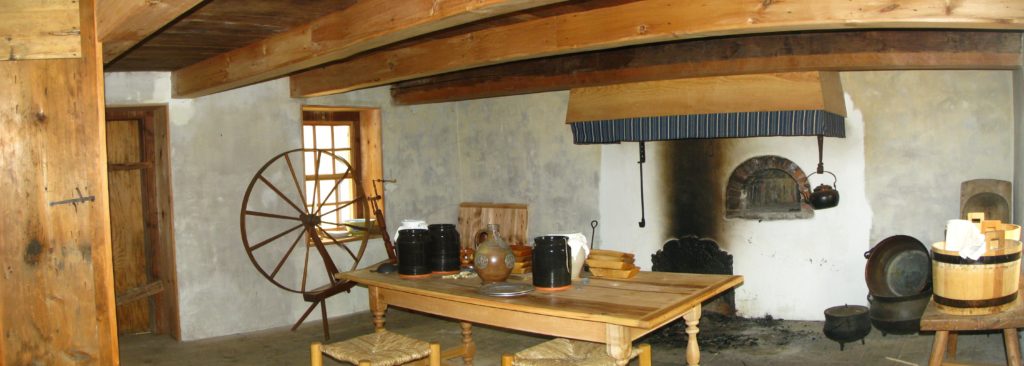
Another notable building is the Treasure House, one of the oldest buildings on Staten Island, dating to 1700. It is named for a discovery of Revolutionary-era British gold coins discovered behind the building’s walls (according to legend).
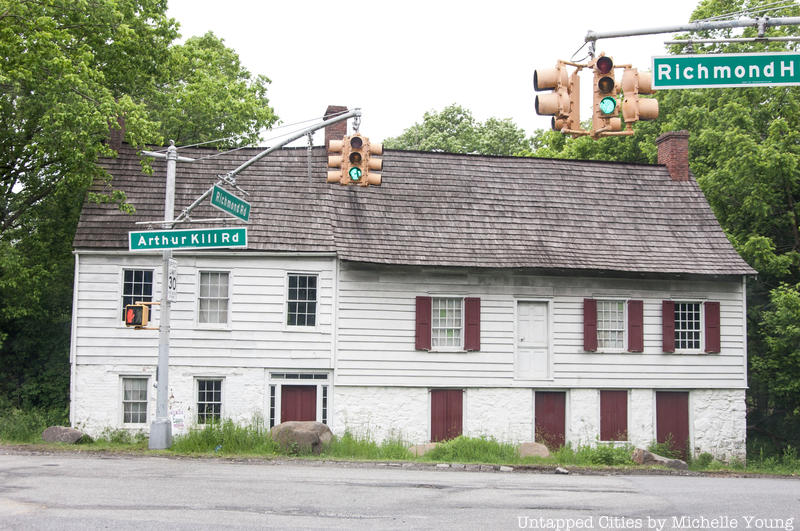
Other than visiting the various historical structures throughout the society, visitors can also speak to and see the work of material culture historians and artisans. These experts in their fields have dedicated years of their lives to reproducing aspects of historical Staten Island life. Some important figures include Jeff Cavorley, a local blacksmith and Cheyney McKnight who is devoted to studying African American material culture in Staten Island.
As the weather warms, walking throughout the 100 acres of land at Historic Richmond Town becomes more bearable. Whether one wants to immerse themselves in New York history or to explore structures that were built as early at the 1600s, they should take the Staten Island Ferry to Historic Richmond Town and make it a day trip.
Next, discover the 11 oldest buildings on Staten Island. See another historical village on Long Island, Old Bethpage Village Restoration, where the show Dickinson is filmed.






